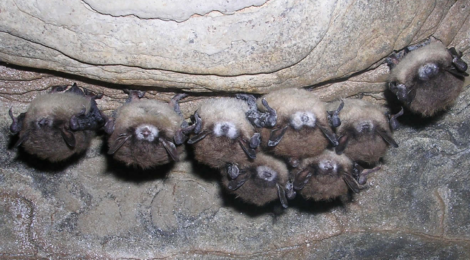
Multi-scale model of White-nose syndrome
White-nose syndrome is an emerging fungal pathogen currently devastating bat populations in the Eastern U.S. We showed previously that the spread of White-nose syndrome is strongly determined by large-scale geographic features so that spatial spread occurs along corridors and through interconnected networks of habitat patches, rather than by simple diffusion. We wondered if this meant that White-nose syndrome might burn itself out in regions where connections among habitat are sparse, for instance in the bridge that connects the Appalachian Mountains with the Interior Highlands.
To investigate this question, we developed a multi-scale model in which local habitats are removed through disease induced mortality, modifying the contact network as the simulated epizootic evolves. This model provides a lower bound on the rate of spread of White-nose syndrome and complements the model of Maher et al, which has no such removal, and therefore represents an upper bound. Our results indicate that disease induced fragmentation of bat habitat in North America will not be sufficient to half the White-nose syndrome epizootic and will only slow its spread a small amount. This is because the connections among habitats are too many and the spread of the fungus too fast for natural fragmentation to occur.
Details of the study are available online at Ecological Applications.






